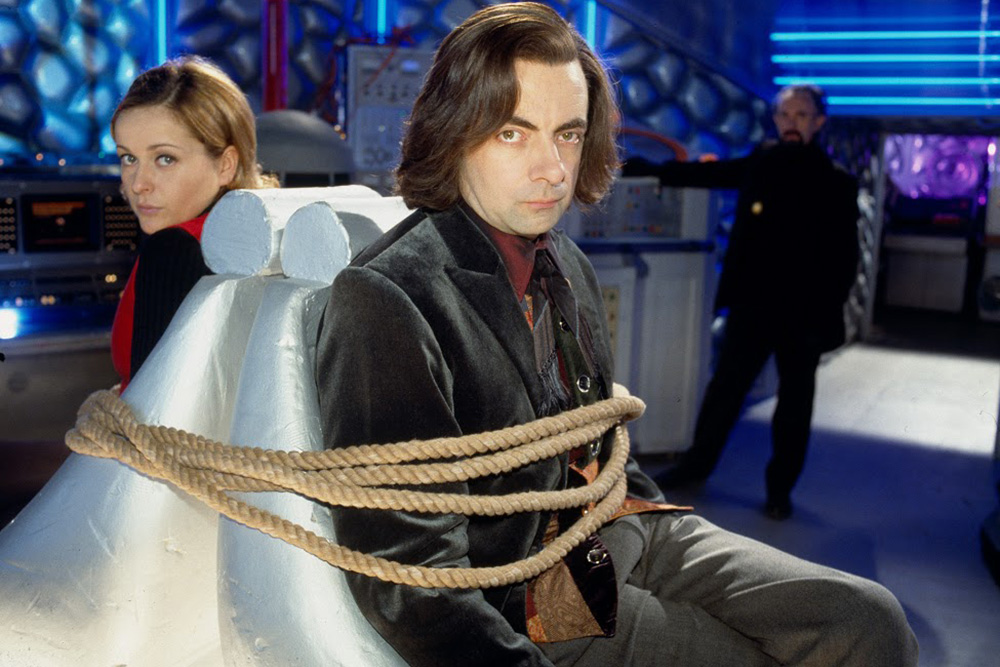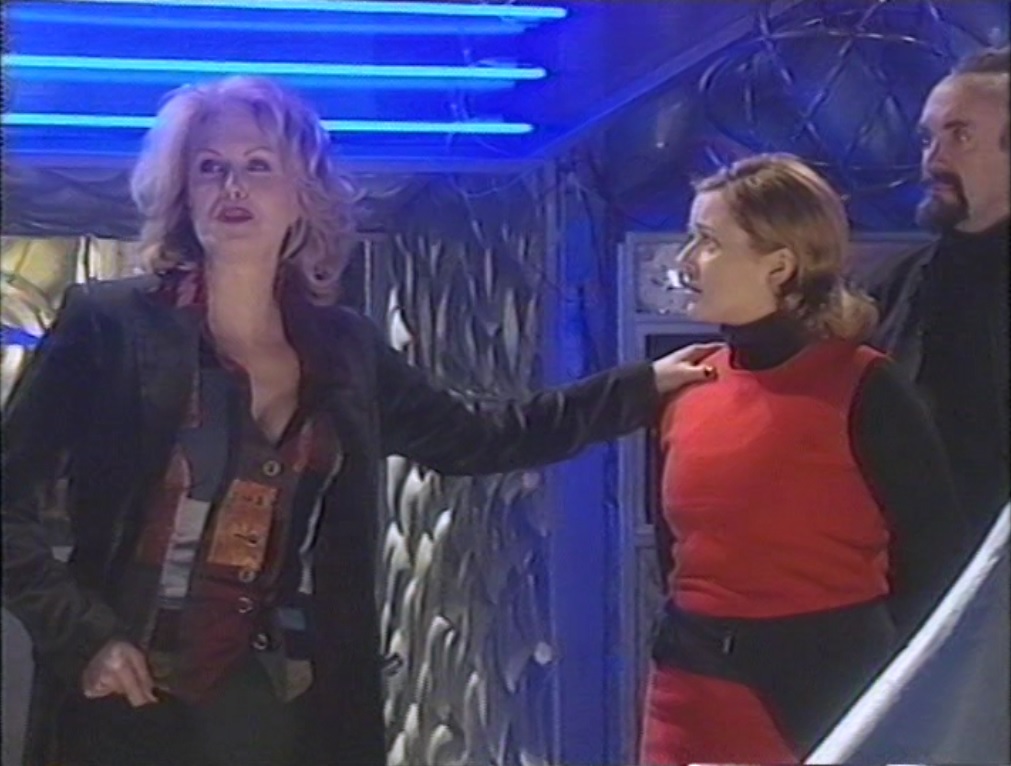‘The Curse of Fatal Death’ was an obscure Doctor Who story from 1999 that introduced an alternative Ninth Doctor… as well as the first female Doctor!

If you’re clued up on Doctor Who history, you will know that the 90s was one of the darkest (and also one of the most creative) periods in the series’ history. The show had been unceremoniously cancelled in 1989, leaving something of a Doctor Who vacuum. Out of this grew a number of disparate projects: the Virgin book series, the abandoned 30th anniversary special, the Children in Need skit, the TV movie… But ‘The Curse of Fatal Death’ was a different beast altogether.
For a start, ‘The Curse of Fatal Death’ was written as a piece of comedy, and by Steven Moffat no less – the man who would go on to become one of the new series’ most popular writers, and eventually showrunner.
Anyway, this was the first time that Doctor Who had attempted an all-out comedy, and for charity, as the episode was part of the BBC’s Comic Relief marathon. And taking the role of the eponymous Doctor was Rowan Atkinson, best known from the comedy series Blackadder and Mr Bean. He was presented to viewers as the Ninth incarnation of the Time Lord, meaning (for better or for worse) he fitted the canon of his time; arguably, ‘The Curse of Fatal Death’ could have been viewed as a sequel to the TV movie, which introduced the Eighth Doctor.
But was it too comedic for anybody to reasonably do this? Not necessarily. ‘The Curse of Fatal Death’ was camp, over-the-top, and deliberately played for laughs, and yet ironically the classic series had ventured into this territory many times before. Indeed, stories such as ‘The Romans’ and ‘The Gunfighters’ were unashamedly comedic, and later stories like ‘Paradise Towers‘ and ‘Delta and the Bannermen‘ were heavily weighted in this direction.
Moreover, towards the end of the Fourth Doctor‘s era, the lead actor Tom Baker was constantly playing up the comedy potential of his character, most notably in stories like ‘Nightmare of Eden’ where he was attacked by Mandrels and emerged with a shredded costume.
Because of this, one could argue that ‘The Curse of Fatal Death’ – if watched out of context – could be viewed as a legitimate piece of Doctor Who canon. Yes, it is camp and comedic, but no more so than some of the stories that preceded it.
And whilst some jokes are more pointed than others (“Say hello to the sofa of reasonable comfort!”) there are others that only a hardcore Doctor Who fan would giggle at.
For example, during the scene in which the Doctor and his companion Emma race through a series of passages as they are pursued by Daleks, Emma turns to the Doctor and says, “These corridors all look the same!” This is a reference to the classic era of Doctor Who, where the producer John Nathan-Turner (concerned that viewers would notice the repetitious nature of the sets, necessitated by budget constraints) insisted that this line of dialogue be used, hoping to fool viewers into thinking that the similar-looking backdrops were a deliberate design choice!
But the punch-line of ‘The Curse of Fatal Death’ comes in its last five minutes, where the Doctor – mortally wounded – regenerates into his tenth body, here played by Richard E Grant. (This is another head-spinning moment for Doctor Who fans, as Grant would shortly be cast as yet another alternative Doctor in ‘The Scream of the Shalka,’ before later appearing as the Great Intelligence during the Matt Smith era. Wibbly wobbly, timey wimey…)
The joke here is that the Doctor keeps dying accidentally and ends up cycling through bodies, regenerating into Richard Broadbent, and then Hugh Grant. By the end of the adventure, viewers are left with a whole plethora of new Doctors, robbing the Time Lord’s regenerative ability of any dramatic potential.
And yet, ironically, ‘The Curse of Fatal Death’ pointed ahead to the future shape of Doctor Who. Indeed, in the Series Twelve episodes ‘Fugitive of the Judoon’ and ‘The Timeless Children,’ we meet a whole host of alternative Doctors, and witness a string of regenerations in quick succession. By the end of Series Twelve, viewers have seen a myriad of different incarnations flash before their eyes, and in Doctor Who: Flux we learn that the Doctor could actually have had “thousands” of forgotten bodies.
‘The Curse of Fatal Death’ also accurately predicted that the Doctor would one day regenerate into a woman. In the Comic Relief episode, this is the final joke of the story: “We have to face facts,” says her companion. “You’ve come back to life and this time… you’re a woman.” The Doctor then takes a fancy to the Master (who admits that she is “rather gorgeous”) and the pair effectively walk off into the sunset.

And of course, while we’re still waiting for a Doctor-Master romance to materialise, the arrival of the first female Doctor is no longer the punchline of a comedy sketch, but the reality of Doctor Who today. This is why ‘The Curse of Fatal Death’ is such a fascinating story. As mentioned previously, it blurs the lines between comedy and science fiction; in the context of ‘The Curse of Fatal Death,’ the myriad Doctors and the arrival of the first female Doctor are the punchlines of the jokes. In today’s Who, they form the series’ cornerstone.
So you wouldn’t have to stretch your imagination too far if you wanted to incorporate ‘The Curse of Fatal Death’ into the Doctor Who canon, perhaps as part of an ‘alternate universe’ timeline alongside Peter Cushing, Richard E Grant, and all the other problematic pieces of Who lore. And whilst “the planet of the bottom burps” and etheric beam locators might stretch the credulity of this proposal, let’s not forget that the Doctor once tried to flush the Master out of the TARDIS by landing it underwater (here’s looking at you, ‘Logopolis.’)
How do you feel about ‘The Curse of Fatal Death’? Do you consider it part of the canon, or nothing more than a comedy sketch? Let me know in the comments below.

TARDIS scarf – order now from the Lovarzi shop!








No I don’t consider it cannon. But it would be nice to use this as a multiverse plot for alternative Doctors like also having Richard E Grant, Peter Cushing, Paul McGann as the half human Doctor, Sylvester McCoy the Doctor from our universe, Fugitive Doctor, Jodi Whitaker as the Timeless Children Doctor, and David Tennant the last of the Time Lords Doctor. Where they combine forces to defeat the Valeyard.